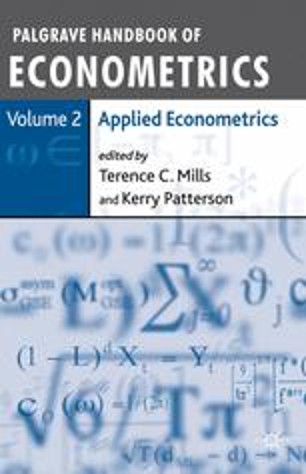GARCH models with R programming : a practical example with TESLA stock


GARCH is a statistical modeling technique used to help predict the volatility of returns on financial assets. GARCH is appropriate for time series data where the variance of the error term is serially autocorrelated following an autoregressive moving average process. The result is that the conclusions and predictive value drawn from the model will not be reliable. GARCH is a statistical model that can be used to arch garch model analyze a number of different types of financial data, for instance, macroeconomic data. Financial institutions typically use this model to estimate the volatility of returns for stocks, bonds, and market indices. ARCH models are commonly employed in modeling financial time series that exhibit time-varying volatility and volatility clustering, i.e. periods of swings interspersed with periods of relative calm.
- ARCH immediately improved financial modeling, resulting in Engle winning the 2003 Nobel Memorial Prize in Economic Sciences.
- In this tutorial, you will discover the ARCH and GARCH models for predicting the variance of a time series.
- ADF-test either from the “tseries” or “urca” packages can be used.
- Generalized AutoRegressive Conditional Heteroskedasticity is a statistical model used in analyzing time-series data where the variance error is believed to be serially autocorrelated.
A line plot is created comparing the series of expected variances to the predicted variance. Although the model was not tuned, the predicted variance looks reasonable. There are many distinct kinds of non-linear time series models.
Share this document
In the latter two cases, you will be prompted to enter a value for the fixed parameter. See “Distributional Assumptions” for details on the supported distributions. Section, you should choose the number of ARCH and GARCH terms. The default, which includes one ARCH and one GARCH term is by far the most popular specification. If your specification includes an ARCH-M term, you should select the appropriate item of the dropdown menu in the upper right-hand side of the dialog. In the command line both creates the object and sets the estimation method.
Since we can only tell whether the ARCH model is appropriate or not by squaring the residuals and examining the correlogram, we also need to ensure that the mean of the residuals is zero. These model deals with stationary (time-invariant mean) and nonstationary (time-varying mean) variable. Connect and share knowledge within a single location that is structured and easy to search.

“) shows the optimal estimated parameters. This table shows the significance of the estimated parameter. Is usually considered as an alternative to the normal distribution in order to check if we have a better model fitting. The model can be fit on the data by calling thefit() function. There are many options on this function, although the defaults are good enough for getting started. The test for an ARCH effect was devised originally by Engle and is similar to the Lagrange Multiplier test for autocorrelation.
We use again the function charSeries() in order to display the time series of the returns. Therefore, the main difference between the GARCH model and the ARCH model is that the GARCH model consider also the volatility of the previous period, while the ARCH model do not. In this tutorial, you discovered the ARCH and GARCH models for predicting the variance of a time series. The dataset may not be a good fit for a GARCH model given the linearly increasing variance, nevertheless, the complete example is listed below. Finally, we can make a prediction by calling theforecast() functionon the fit model.
The general process for a GARCH model involves three steps. The first is to estimate a best-fitting autoregressive model. The second is to compute autocorrelations of the error term. When it comes to modelling conditional variance, arch is the Python package that sticks out. Note that there’s no package like pmdarima that automatically finds the optimal parameters p and q based on a given criterion. Now we can display the histogram of returns and try to see if the normal distribution could be used for the conditional error term.
GARCH Univarié
Heteroskedasticity describes the irregular pattern of variation of an error term, or variable, in a statistical model. Essentially, where there is heteroskedasticity, observations do not conform to a linear pattern. GARCH stands for Generalized Autoregressive Conditional Heteroskedasticity Models. GARCH models are commonly used to estimate the volatility of returns for stocks, currencies, indices cryptocurrencies.
When the assumption of conditional normality does not hold, the ARCH parameter estimates will still be consistent, provided the mean and variance functions are correctly specified. The estimates of the covariance matrix will not be consistent unless this option is specified, resulting in incorrect standard errors. An autoregressive integrated moving average model is a statistical analysis model that leverages time series data to forecast future trends. On a plot of returns, for example, stock returns may look relatively uniform for the years leading up to a financial crisis such as that of 2007.

This option is only available if you choose the conditional normal as the error distribution. Indeed, it is useful to check if the error term follows the normal distribution. The null hypothesis is that the conditional error term follows a normal distribution.
What is ARIMA GARCH?
Run the regression of the model using Ordinary Least Squares and collect the residuals. As we can see from the stylized facts, the normal distribution assumption is not true. We will estimate both ARCH and GARCH models with t-distribution innovation. Robert Engle III is an American economist who won the 2003 Nobel Prize in Economics for his analysis of time-series data with time-varying volatility. GARCH is useful to assess risk and expected returns for assets that exhibit clustered periods of volatility in returns.
Therefore, an ARCH model means that the time-dependent volatility depends on the first q lag squared values of the error term. A lag parameter must be specified to define the number of prior residual errors to include in the model. Using the notation of the GARCH model , we can refer to this parameter as “q“.
ARMA is a model for the realizations of a stochastic process imposing a specific structure of the conditional mean of the process. GARCH is a model for the realizations of a stochastic process imposing a specific structure of the conditional variance of the process. These models relate to economic forecasting and measuring volatility. Some of the techniques adopted in the finance sector ARCH, ARCH-M, GARCH, GARCH-M, TGARCH, and EGARCH.
Volatility may then return to levels resembling that of pre-crisis levels or be more uniform going forward. A simple regression model does not account for this variation in volatility exhibited in financial markets. It is not representative of the “black swan” events that occur more often than predicted.
There are some time series where the variance changes consistently over time. In the context of a time series in the financial domain, this would be called increasing and decreasing volatility. In time series where the variance is increasing in a systematic way, such as an increasing trend, this property of the series is calledheteroskedasticity. It’s a fancy word from statistics that means changing or unequal variance across the series. If the change in variance can be correlated over time, then it can be modeled using an autoregressive process, such as ARCH. GARCH was developed in 1986 by Dr. Tim Bollerslev, a doctoral student at the time, as a way to address the problem of forecasting volatility in asset prices.
Autoregressive models can be developed for univariate time series data that is stationary , has a trend , and has a seasonal component . One aspect of a univariate time series that these autoregressive models do not model is a change in the variance over time. Classically, a time series with modest changes in variance can sometimes be adjusted using a power transform, such as by taking the Log or using a Box-Cox transform. The ARCH or Autoregressive Conditional Heteroskedasticity method provides a way to model a change in variance in a time series that is time dependent, such as increasing or decreasing volatility.
You should add the C to your specification if you wish to include a constant. If you have a more complex mean specification, you can enter your mean equation using an explicit expression. The GARCH process provides a more real-world context than other models when predicting the prices and rates of financial instruments. Based on this graph, we can still see that there are months with very high volatility and months with very low volatility, suggesting the stochastic model for conditional volatility. Estimate the ARMA model for the volatility s of the residuals based on one of the specified model.
GARCH modelling in Python
We also reference original research from other reputable publishers where appropriate. You can learn more about the standards we follow in producing accurate, unbiased content in oureditorial policy. Various studies have been conducted on the reliability of various GARCH models during different market conditions, including during the periods leading up to and after the Great Recession. While models can be carefully specified using the individual components, most common specifications can be specified using a simple model constructor. No correlations are significant, so the series looks to be white noise.
Thus GARCH is the “ARMA equivalent” of ARCH, which only has an autoregressive component. GARCH models permit a wider range of behavior more persistent volatility. Now, lets have a look at the persistence of the first and second order moments of the series.
Eneralized Autoregressive Conditional Heteroskedasticity, or GARCH, is an extension of the ARCH model that incorporates a moving average component together with the autoregressive component. We say that ϵ is an autoregressive conditional heteroskedastic model of order unity, denoted by ARCH. In practice, this can be used to model the expected variance on the residuals after another autoregressive model has been used, such as an ARMA or similar. ARCH model is concerned about modeling volatility of the variance of the series.
The ACF of the squared series follows an ARMA pattern because of both the ACF and PACF taper. The ACF of the series below shows that the series looks to be white noise. We can say that the variance of the series is simply a linear combination of the variance of the prior element of the series. Where w is the white noise with zero mean and unit variance. Crucially, ARCH should only ever be applied to series that do not have any trends or seasonal effects, i.e. that have no serially correlation. ARIMA is often applied to such a series , at which point ARCH may be a good fit.
In this case, we will predict the variance for the last 10 time steps of the dataset, and withhold them from the training of the model. … A good volatility model must be able to capture and reflect these stylized facts. To illustrate these stylized facts, data on the Dow Jones Industrial Index were used, and the ability of GARCH-type models was used to capture these features.

























































